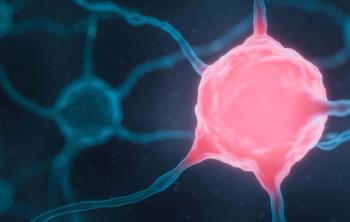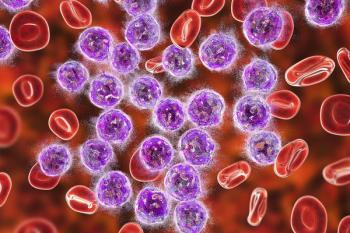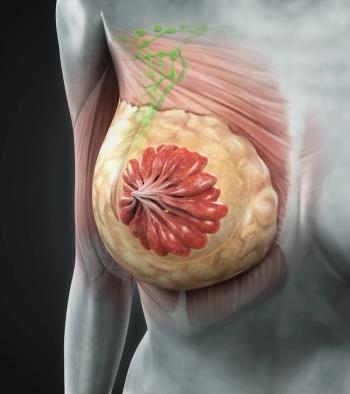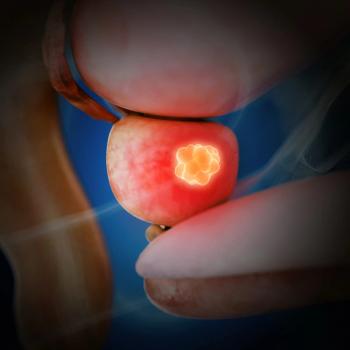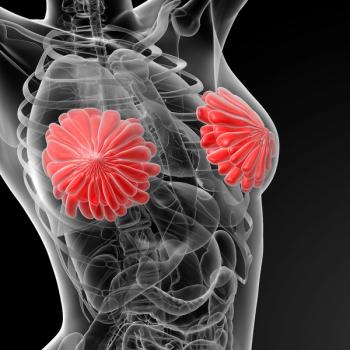
Fatigue and Dyspnea
Fatigue and dyspnea are two of the most common symptoms associated with advanced cancer. Fatigue is also commonly associated with cancer treatment and occurs in up to 90% of patients undergoing chemotherapy.
Fatigue and dyspnea are two of the most common symptoms associated with advanced cancer. Fatigue is also commonly associated with cancer treatment and occurs in up to 90% of patients undergoing chemotherapy. Both symptoms have many possible underlying causes. In most patients, the etiology of fatigue or dyspnea is multifactorial, with many contributing interrelated abnormalities. In one study of patients with advanced cancer, fatigue was found to be significantly correlated with the intensity of dyspnea. This chapter will discuss the mechanisms, clinical features, assessment, and management of both of these troublesome and often undertreated symptoms in cancer patients.
Fatigue
Cancer-related fatigue is defined by the National Comprehensive Cancer Network as “a distressing, persistent, subjective sense of physical, emotional, and/or cognitive tiredness or exhaustion related to cancer or cancer treatment that is not proportional to recent activity and interferes with usual functioning.” In cancer patients, fatigue is often severe; has a marked anticipatory component; and results in lack of energy, malaise, lethargy, and diminished mental functioning that profoundly impairs quality of life. It may be present early in the course of the illness, may be exacerbated by treatments, and is present in almost all patients with advanced cancer.
Fatigue is sometimes referred to as asthenia, tiredness, lack of energy, weakness, and exhaustion. Not all of these terms have the same meaning to all patient populations. Moreover, different studies of fatigue and asthenia have looked at different outcomes, ranging from physical performance to the purely subjective sensation.
The mechanisms of cancer-related fatigue are not well understood. Substances produced by the tumor are postulated to induce fatigue. When injected into a rested subject, blood from a fatigued subject has produced manifestations of fatigue. The host production of cytokines in response to the tumor can also have a direct fatigue-inducing effect. Muscular or neuromuscular junction abnormalities are a possible cause of chemotherapy- or radiotherapy-induced fatigue. In summary, fatigue is the result of many syndromes-not just one. Multiple mechanisms are involved in causing fatigue in most patients with advanced cancer.
The causes of fatigue in an individual patient are often multiple, with many interrelated factors.
FIGURE 1: Contributors to fatigue in cancer patients.
Cachexia
Cancer cachexia results from a complex interaction of host and tumor products. Host cytokines such as tumor necrosis factor, interleukin (IL)-1, and IL-6 are capable of causing decreased food intake, loss of body weight, a decrease in synthesis of both lipids and proteins, and increased lipolysis. The metabolic abnormalities involved in the production of cachexia and the loss of muscle mass resulting from progressive cachexia may cause profound weakness and fatigue. However, many abnormalities described in
Immobility
Decreased physical activity has been shown to cause deconditioning and decreased endurance to both exercise and normal activities of daily living. On the other hand, overexertion is a frequent cause of fatigue in noncancer patients. It should also be considered in younger cancer patients who are undergoing aggressive antineoplastic treatments such as radiation therapy and chemotherapy and who are nevertheless trying to maintain their social and professional activities.
Psychological distress
In patients without cancer who present with fatigue, the final diagnosis is psychological (eg, depression, anxiety, and other psychological disorders) in almost 75% of patients. The frequency of major psychiatric disorders in cancer patients is low. However, symptoms of psychological distress or adjustment disorders with depressive or anxious moods are much more frequent. Patients with an adjustment disorder or a major depressive disorder can have fatigue as their most prevalent symptom.
Anemia
Low red blood cell count related to advanced cancer or chemotherapy has been associated with fatigue, and its treatment results in improvement of fatigue and quality of life in these patients. In terminally ill patients with advanced cancer, treatment of anemia may not resolve fatigue adequately because of the multifactorial nature of its etiology. Fatigue may be the result of the more intense nature of the other contributory factors.
Autonomic failure
Autonomic insufficiency is a frequent complication of advanced cancer. Autonomic failure has also been documented in patients with severe chronic fatigue syndrome. Although the association between fatigue and autonomic dysfunction has not been established in cancer patients, it should be suspected in patients with severe postural hypotension or other signs of autonomic failure.
Hypogonadism
Both intrathecal and systemic opioid therapies, as well as cachexia and some antineoplastic therapies, can result in hypogonadotropic hypogonadism. This condition can lead to fatigue, depression, and reduced libido.
Chemotherapy/radiotherapy
Chemotherapy and radiotherapy are common causes of fatigue in cancer patients. The pattern of fatigue reported by patients with cancer who receive myelosuppressive chemotherapy is cyclical. It begins within the first few days after therapy is started, peaks around the time of the white blood cell nadir, and diminishes in the week thereafter, only to recur again with the next cycle of chemotherapy. Fatigue tends to worsen with subsequent cycles of chemotherapy, which suggests a cumulative dose-related toxic effect. Compared with women who have no history of cancer, former patients with breast cancer who had received adjuvant chemotherapy reported more fatigue and worse quality of life due to this symptom. Similar results have been noted in breast cancer patients who have been treated with high-dose chemotherapy and autologous stem cell support and in patients treated for lymphoma.
Radiation therapy tends to cause a different pattern of fatigue. It is often described as a “wave” that starts abruptly within a few hours after treatment and subsides shortly thereafter. Fatigue has been noted to decrease in the first 2 weeks after localized treatment for breast cancer but then to increase as radiation therapy persists into week 4. It then decreases again 3 weeks after radiation therapy ceases. The mechanism for fatigue in these situations is not well understood.
Administration of chemotherapy and radiotherapy for malignancy causes a specific fatigue syndrome. Combined therapy with the two modalities appears to cause worse fatigue than does either modality given alone.
Surgery
Surgery is another common cause of fatigue in patients with cancer. In addition, commonly used medications, such as opioids and hypnotics, may cause sedation and fatigue.
Other
Comorbid conditions not necessarily related to cancer, such as renal failure and congestive heart failure, may coexist and contribute to the problem. Other conditions include the chronic stress response (possibly mediated through the hypothalamic-pituitary axis), disrupted sleep or circadian rhythms, and hormonal changes (eg, premature menopause and androgen blockade secondary to cancer treatment).
Since fatigue is essentially a subjective sensation, it is by nature difficult to assess. There is agreement that self-assessment should be the “gold standard.” Because of the complex nature of the symptoms of fatigue, an effort to identify a set of diagnostic criteria similar to those for depression has been attempted. This syndromal approach has been useful to assess the presence or absence of the clinical syndrome of fatigue.
TABLE 1: Assessment of fatigue
The second category in
The third category in
The fourth category in
In addition to the assessment of the intensity of fatigue, the clinical assessment of these patients requires clinicians to determine the impact of all factors on the presence of fatigue.
FIGURE 2: Therapeutic approach to managing fatigue.
To treat fatigue optimally, it is vital to identify and prioritize the different underlying factors in the individual patient. Thorough records, including recent treatment history, physical examination, and medication review, in addition to simple laboratory investigations, will help identify possible underlying causes.
In patients with cancer treatment–related fatigue, it is important to exclude specific causes, such as hypothyroidism, hypogonadism, and anemia, and to consider other potential adverse effects of treatment. If specific problems are identified, they should be appropriately managed. For instance, patients with anemia may experience symptomatic improvement with the administration of erythropoietic therapy (epoetin alfa [Epogen, Procrit] and darbepoetin alfa [Aranesp]) at the dose and administration schedule that best fit the patient’s need. Epoetin alfa may be administered weekly by subcutaneous injection; darbepoetin alfa has a longer half-life, requiring less frequent dosing. Dosages and schedules of both agents may be increased if necessary. (For up-to-date information about the safety and use of erythropoiesis-stimulating agents from the US Food and Drug Administration (FDA) visit the “
In most patients, there will be no identified reversible causes. A number of effective pharmacologic and nonpharmacologic symptomatic treatments are available for these patients.
Pharmacologic treatments
Corticosteroids. There is substantial evidence that corticosteroids can reduce fatigue and other symptoms in cancer patients. They are probably best retained for short-term use. Their beneficial effects generally last between 2 and 4 weeks, and longer-term use carries the risk of serious adverse effects. Most studies have used the equivalent of 40 mg/d of prednisone. In a recent double-blind placebo controlled study of 84 advanced cancer patients with fatigue, oral dexamethasone at a standard dose of 8 mg daily for 2 weeks was associated with significant improvement in cancer-related fatigue. There were no significant differences in adverse events in patients in the dexamethasone and placebo group.
Progestational agents. In recent studies of terminally ill patients, megestrol (60 to 480 mg/d) has been shown to have a rapid (less than 1 week) beneficial effect on appetite, fatigue, and general well-being. However, long-term use is associated with weight (fluid) gain, adrenal insufficiency, and thromboembolic complications.
Psychostimulants. Psychostimulants (eg, methylphenidate, 5 to 10 mg in the morning and at noon or 5 mg as needed) may be useful in treating fatigue in patients with advanced cancer. In a study by Bruera et al, 141 advanced cancer patients were evaluated for a period of 15 days so as to compare the effects of methylphenidate and placebo. The effects of combined intervention including methylphenidate plus a nursing intervention were also assessed. The results of this study showed that there was no significant improvement in fatigue in the methylphenidate group compared with the placebo group. There was also no significant benefit from methylphenidate plus a nursing telephone intervention on cancer-related fatigue. A 148-patient study by Moraska et al also found no significant improvement in cancer-related fatigue with long-acting methylphenidate compared with placebo. In a recent study by Spathis et al, 160 patients with advanced non–small-cell lung cancer were randomized to modafinil or placebo for 28 days. Similar to the previous studies of Bruera et al and Moraska et al, fatigue improved among patients treated with modafinil but there was no significant difference between the active and placebo treatments. Based on these results, future studies of psychostimulants should be focused on a specific patient group, such as fatigued patients with depression or drowsiness.
Ginseng. Based on a preliminary study that found significant improvement of cancer-related fatigue with a dose of 2,000 mg extract of ground root of American ginseng (Panax quinquefolius), Barton et al recently completed a double-blind trial of 2,000 mg of American ginseng vs placebo for 8 weeks in 364 fatigued cancer survivors. At 4 weeks, the ginseng group showed a trend (P = .07) toward improvement in fatigue compared with placebo, and at 8 weeks there was significant improvement in fatigue in the ginseng group compared with the placebo group (P = .003), based on changes from baseline score using the Multidimensional Fatigue Symptom Inventory-Short Form. There was no significant increase in toxicities in the ginseng group compared with the placebo group. In a recent preliminary study of 30 cancer patients, we found that high-dose oral Panax ginseng extract (800 mg/d) was safe to use for 28 days and was associated with significant improvement in fatigue and related symptoms. Further randomized studies are warranted.
Nonpharmacologic treatment
Physical activity. A recent Cochrane review suggests that physical activity (aerobic and/or resistance) may be effective in improving cancer-related fatigue, specifically in patients with early cancer and in cancer survivors. Studies suggest that moderate to intense (55% to 75% of maximum heart rate) aerobic exercise for 10 to 90 minutes, 3 to 7 days per week is safe and effective.
Physical therapy and occupational therapy. When appropriate in patients with advanced cancer, physical therapy may encourage increased activity and provide active range of motion to prevent painful tendon retraction. Assessment of the home environment by an occupational therapist can be useful. The provision of ramps, walkers, wheelchairs, elevated toilets, and hospital beds may allow the patient to remain at home in a safe environment. Education regarding the pattern of fatigue during treatment has been helpful. Counseling (more specifically, cognitive-behavioral therapy [CBT]) for stress management, depression, and anxiety may reduce distress and fatigue as well as improve mood.
Yoga. A recent controlled trial by Chandwani and Cohen et al assessed 163 breast cancer patients receiving radiation therapy who were randomized to a yoga group, a stretching group, or a waitlist group. Patients assigned to yoga for three 1-hour sessions a week for 6 weeks during radiation therapy showed improvement in fatigue (BFI score, 0.23), as did the stretching group (BFI score, 0.45). However, patients in the yoga group had a greater improvement in physical functioning (Short Form 36 Health Survey), compared with the stretching and waitlist groups.
Psychosocial interventions, such as CBT, have been found to be effective in improving cancer-related fatigue in cancer patients receiving treatment. A recent randomized controlled trial by Montogomery et al found that the benefits of CBT on cancer-related fatigue lasted long after the CBT was finished.
Dyspnea
Dyspnea has been defined as an uncomfortable awareness of breathing. It is a subjective sensation and does not necessarily correlate with clinical findings in a given patient. It occurs in up to 75% of patients with advanced cancer, and good symptom control is less frequently achieved in dyspneic patients, even by experienced palliative care teams, than in patients with other symptoms of terminal cancer, such as pain and nausea. The frequency of breathlessness increases rapidly with disease progression in patients with advanced cancer.
The pathophysiology of dyspnea is complex and has not been completely elucidated. The respiratory center in the medulla controls breathing, but dyspnea is the result of cortical stimulation. This respiratory center is stimulated by abnormalities of blood gases detected by both lung and central chemoreceptors and by stimulation of lung and respiratory muscle mechanoreceptors. Mechanoreceptors respond to stretching and irritants. Their activity also has a demonstrated effect on the brain cortex, which can cause dyspnea. In addition, it is possible that both the chemoreceptors and the medullary respiratory center stimulate the cerebral cortex, directly contributing to the sensation of dyspnea.
FIGURE 3: Mechanisms of dyspnea. PCO
2
= partial pressure of carbon dioxide.
In patients with advanced cancer, there are many causes of dyspnea, such as pulmonary embolism, lung metastasis, pleural effusion, congestive heart failure, anemia, psychological distress, pneumonia, muscle weakness, and preexisting pulmonary disease.
Direct tumor effects
Dyspnea may be the result of direct primary or metastatic tumor effects such as airway obstruction, atelectasis, parenchymal lung involvement, phrenic nerve palsy, carcinomatous lymphangitis, or superior vena cava obstruction.
Indirect tumor effects
Effects of cancer that can contribute indirectly to dyspnea include pneumonia, anemia, pleural effusion, and pulmonary embolism. Cardiac complications of cancer, such as congestive heart failure, pericarditis, or pericardial effusion, also may contribute to the problem. Intra-abdominal disorders, such as gross ascites and hepatomegaly, may cause elevation of the diaphragm and may interfere with respiratory function. Generalized muscle weakness due to cachexia or fatigue may exacerbate breathlessness. Preexisting lung diseases, including asthma and chronic obstructive pulmonary disease (COPD), may contribute to the problem.
Treatment side effects
Treatment adverse effects that can contribute to dyspnea include pneumonitis and fibrosis following chemotherapy or radiotherapy.
Psychological conditions
Anxiety, depression, and somatization will alter a patient’s perception of dyspnea. Anxiety has been found to be an independent correlate of the intensity of dyspnea in cancer patients with moderate to severe dyspnea. Any of these factors may occur in isolation or in combination, and care is needed during patient assessment because there are often many contributors to dyspnea in an individual patient.
TABLE 2: Management of specific causes of dyspnea in cancer patients
Dyspnea is a subjective sensation, and researchers have found much variability in the expression of dyspnea in individuals with similar levels of functional abnormalities. In addition, patients’ perception of dyspnea can be influenced by their beliefs and intrapsychic and cultural factors. The presence or absence of physical signs, such as tachypnea, wheezing, and use of accessory muscles, is not a reliable indicator of the degree of distress felt by patients. The intensity of dyspnea can be easily assessed using verbal, numeric, or visual analog scales similar to those used in pain or nausea. A descriptive study by Henoch et al examined dyspnea in correlation with other symptoms, as well as personal and health factors in 105 patients with advanced lung cancer. More than 50% of patients had perceived dyspnea. The intensity of dyspnea and the occurrence of activity-related dyspnea correlated with the presence of anxiety, depression, fatigue, and cough. A lower coping capacity was associated with a greater likelihood of dyspnea.
Recently, maximal inspiratory pressure has been found to be an independent correlate of the intensity of dyspnea. Physical examination, chest radiography, and pulse oximetry should be performed. Other investigations, such as complete blood cell count, echocardiography, and pulmonary function tests, may be indicated.
Specific causes
Underlying specific causes will require treatment as indicated in
Symptomatic management
The three modalities of symptomatic treatment in cancer-related dyspnea are oxygen therapy, drug therapy, and counseling.
In patients with advanced malignant and nonmalignant disease, Bausewein et al found breathing training, walking aids, neuroelectrical muscle stimulation, and chest wall vibration to be effective in relieving dyspnea.
Oxygen therapy. In hypoxemic cancer patients with dyspnea, oxygen has been shown to provide significant symptomatic relief. Oxygen can be administered by nasal cannula at 2 to 6 L/min or by mask and titrated to maintain an oxygen saturation at greater than 90%. Care must be taken in patients with COPD. Oxygen is not useful in patients with dyspnea and an oxygen saturation greater than 90%. A recent preliminary study of high-flow oxygen and bilevel positive airway pressure for management of dyspnea in 30 cancer patients found significant improvement in dyspnea with both of the interventions, and they were found to be safe and feasible, with significant improvement in physiological parameters such as oxygen saturation. Further studies are needed.
Drug therapy. There is substantial evidence that systemic opioids have a beneficial effect on cancer-related dyspnea. This is possible without inducing respiratory depression. The optimal type, dose, and mode of administration have not been determined. If the patient is already receiving opioids, the breakthrough dose can be used to manage dyspnea as well as pain. If not, morphine can be started at 5 to 10 mg PO (or 2.5 to 5 mg SC) every 4 hours with additional as-needed doses of 2.5 to 5 mg PO (or 2.5 mg SC) every hour for breakthrough dyspnea. Nebulized opiates are not recommended, because there is insufficient evidence to support their use. A recent preliminary study by Hui et al found that subcutaneous fentanyl when given prophylactically before exertion may benefit dyspnea, fatigue, walking distance, and respiratory rate.
In a randomized crossover clinical trial to evaluate the efficacy of oral transmucosal fentanyl for treatment of dyspnea on exertion in patients with advanced cancer, Pinna et al found no significant improvement in dyspnea on exertion or oxygen saturation or other cancer-related symptoms with the treatment of fentanyl, although there was a tendency toward decrease in the intensity of dyspnea. Further studies are needed to determine effective treatments, including the role of opioids for exertional dyspnea in patients with advanced cancer.
Benzodiazepines have not been found to be effective in the general management of dyspnea, but they may be useful for treatment of episodes associated with anxiety attacks. Regular use of benzodiazepines should be avoided when possible to limit adverse effects, such as confusion and falls.
In a recent double-blind placebo-controlled study of 84 advanced cancer patients with fatigue, published in the Journal of Clinical Oncology in 2013, oral dexamethasone at a standard dose of 8 mg daily for 2 weeks compared with placebo was associated with improvement in dyspnea assessed by the Edmonton Symptom Assessment Scale shortness of breath item at day 15 (−2.16 [2.92] vs −0.89 [2.40]; P = .06). However, further studies are needed with dyspnea as a primary outcome.
Conditions that cause dyspnea in cancer patients and that respond to corticosteroid medication include superior vena cava obstruction, carcinomatous lymphangitis, and COPD. However, corticosteroids may adversely affect muscle function, and the diaphragm may be more susceptible than other muscles. This may be of importance because of the frequency of muscle weakness and fatigue in patients with advanced cancer.
In a Cochrane review, Simon et al found no evidence of beneficial effect from benzodiazepines given to treat dyspnea in patients with advanced cancer and COPD.
Counseling. Dyspnea is a variable symptom and is exacerbated by physical activities. Patients and families should be educated so they can identify factors likely to worsen dyspnea. Devices such as bathroom aids and wheelchairs can help reduce physical activity, and the addition of portable oxygen can enable the patient to remain active and autonomous. For symptomatic relief, medication such as opioids can be administered 30 to 45 minutes before dyspnea-causing maneuvers. The family should be informed that dyspnea is subjective and that tachypnea and use of accessory muscles do not necessarily indicate that the patient is suffering. The aim of treatment is to relieve the patient’s subjective dyspnea, not to abate physical signs of respiratory distress.
Suggested Reading
On Fatigue
Barton DL, Liu H, Dakhil SR, et al: Wisconsin Ginseng (Panax quiquefolius) to improve cancer-related fatigue: A randomized double-blind trial, N07C2. J Natl Cancer Inst 105:1230–1238, 2013.
Bruera E, Driver L, Barnes EA, et al: Patient-controlled methylphenidate for the management of fatigue in patients with advanced cancer: A preliminary report. J Clin Oncol 21:4439–4443, 2003.
Bruera E, Yennurajalingam S, Palmer LJ, et al: Methylphenidate and/or nursing telephone intervention for fatigue in patients with advanced cancer: A randomized, placebo-controlled, phase II study. J Clin Oncol 31:2421-2427, 2013.
Chandwani KD, Perkins G, Nagendra HR, et al: Randomized, controlled trial of yoga in women with breast cancer undergoing radiotherapy. J Clin Oncol 32:1058–1065, 2014.
Cleary J: The reversible causes of asthenia in cancer patients. In: Portenoy R, Bruera E, eds: Topics in Palliative Care. Vol 2, pp 183–202. New York: Oxford University Press; 1998.
Cramp F, Byron-Daniel J: Exercise for management of cancer-related fatigue in adults. Cochrane Database Syst Rev 11:CD006145, 2012.
Dimeo F, Stieglitz R, Novelli-Fischer U, et al: Effects of physical activity on the fatigue and psychological status of cancer patients during chemotherapy. Cancer 85:2273–2277, 1999.
Hann DM, Garovoy N, Finkelstein B, et al: Fatigue and quality of life in breast cancer patients undergoing autologous stem cell transplantation: A longitudinal comparative study. J Pain Symptom Manage 17:311–319, 1999.
Henoch I, Bergman B, Gustafsson M, et al: Dyspnea experience in patients with lung cancer in palliative care. Eur J Oncol Nurs 12:86–96, 2008.
Howell SJ, Radford JA, Adams JE, et al: Randomized placebo-controlled trial of testosterone replacement in men with mild Leydig cell insufficiency following cytotoxic chemotherapy. Clin Endocrinol 55:315–324, 2001.
Montogomery GH, David D, Kangas M, et al: Randomized controlled trial of cognitive-behavioral therapy plus hypnosis intervention to control fatigue in patients undergoing radiotherapy for breast cancer. J Clin Oncol 32:557–563, 2014.
Moraska AR, Sood A, Dakhil SR, et al: Phase III, randomized, double-blind, placebo-controlled study of long-acting methylphenidate for cancer-related fatigue: North Central Cancer Treatment Group NCCTG-N05C7 trial. J Clin Oncol 28:3673–3679, 2010.
Munch TN, Zhang T, Willey J, et al: The association between anemia and fatigue in patients with advanced cancer receiving palliative care. J Palliat Med 8:1144–1149, 2005.
Neuenschwander H, Bruera E: Pathophysiology of cancer asthenia. In: Portenoy R, Bruera E, eds: Topics in Palliative Care. Vol 2, pp 171–181. New York: Oxford University Press; 1998.
Sadler IJ, Jacobsen PB, Booth-Jones M, et al: Preliminary evaluation of a clinical syndrome approach to assessing cancer-related fatigue. J Pain Symptom Manage 23:406–416, 2002.
Segal RJ, Reid RD, Courneya KS, et al: Randomized controlled trial of resistance or aerobic exercise in men receiving radiation therapy for prostate cancer. J Clin Oncol 27:344–351, 2009.
Seidenfeld J, Piper M, Flamm C, et al: Epoetin treatment of anemia associated with cancer therapy: A systematic review and meta-analysis of controlled clinical trials. J Natl Cancer Inst 93:1204–1214, 2001.
Spathis A, Fife K, Blackhall F, et al: Modafinil for treatment of fatigue in lung cancer: Results of a placebo-controlled, double-blind, randomised trial. J Clin Oncol 32:1882–1888, 2014.
Yennurajalingam S, Frisbee-Hume S, Palmer JL, et al: Reduction of cancer-related fatigue with dexamethasone: A double-blind, randomized, placebo-controlled trial in patients with advanced cancer. J Clin Oncol 31:3076–3082, 2013.
Yennurajalingam S, Reddy A, Tannir NM, et al: High-dose Asian ginseng (Panax ginseng) for cancer-related fatigue: A preliminary report. Integr CancerTher 2015 Apr 14 [Epub ahead of print].
On Dyspnea
Allard P, Lamontagne C, Bernard P, Tremblay C: How effective are supplementary doses of opioids for dyspnea in terminally ill cancer patients? A randomized continuous sequential clinical trial. J Pain Symptom Manage 17:256–265, 1999.
Bausewein C, Booth S, Gysels M, et al: Non-pharmacological interventions for breathlessness in advanced stages of malignant and non-malignant diseases. Cochrane Database Syst Rev (2):CD005623, 2008.
Bruera E, Schmitz B, Pither J, et al: The frequency and correlates of dyspnea in patients with advanced cancer. J Pain Symptom Manage 19:357–362, 2000.
Currow DC, Agar M, Smith J, et al: Does palliative home oxygen improve dyspnoea? A consecutive cohort study. Palliat Med 23:309–316, 2009.
Currow DC, Smith J, Davidson PM, et al: Do the trajectories of dyspnea differ in prevalence and intensity by diagnosis at the end of life? A consecutive cohort study. J Pain Symptom Manage 39:680–690, 2010.
Hui D, Morgado M, Chisholm G, et al: High-flow oxygen and bilevel positive airway pressure for persistent dyspnea in patients with advanced cancer: A phase II randomized trial. J Pain Symptom Manage 46:463–473, 2013.
Hui D, Xu A, Frisbee-Hume S, et al: Effects of prophylactic subcutaenous fentanyl on exercise-induced breakthrough dyspnea in cancer patients: A preliminary double-blind, randomized, controlled trial. J Pain Symptom Manage 47:209–217, 2014.
Mancini I, Body JJ: Assessment of dyspnea in advanced cancer patients. Support Care Cancer 7:229–232, 1999.
Pinna MA, Bruera E, Moralo MJ, et al: A randomized crossover clinical trial to evaluate the efficacy of oral transmucoasl fentanyl citrate in the treatment of dyspnea on exertion in patients with advanced cancer. Am J Hosp Palliat Care 2013 Nov 20 [Epub ahead of print].
Reddy SK, Parsons HA, Elsayem A, et al: Characteristics and correlates of dyspnea in patients with advanced cancer. J Palliat Med 12:29–36, 2009.
Ripamonti C, Fulfaro F, Bruera E: Dyspnea in patients with advanced cancer: Incidence, causes, and treatments. Cancer Treat Rev 42:60–80, 1998.
Simon ST, Higginson IJ, Booth S, et al: Benzodiazepines for the relief of breathlessness in advanced malignant and non-malignant diseases in adults. Cochrane Database Syst Rev (1):CD007354, 2010.
Xue D, Abernethy A: Management of dyspnea in advanced lung cancer: Recent data and emerging concepts. Curr Opin Support Palliat Care 4:85–91, 2010.
Yennurajalingam S, Frisbee-Hume S, Palmer JL, et al: Reduction of cancer-related fatigue with dexamethasone: A double-blind, randomized, placebo-controlled trial in patients with advanced cancer. J Clin Oncol 31:3076–3082, 2013.
Newsletter
Stay up to date on recent advances in the multidisciplinary approach to cancer.


